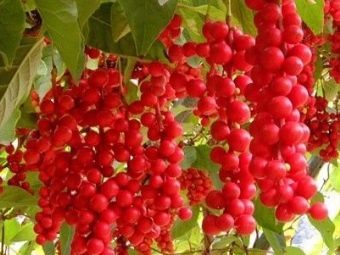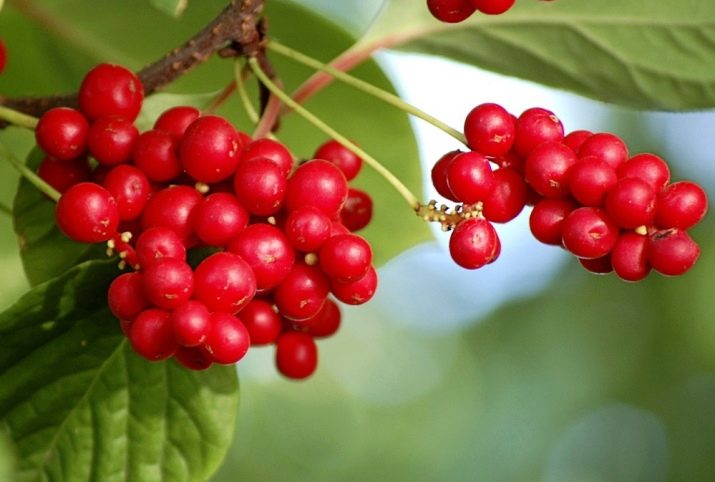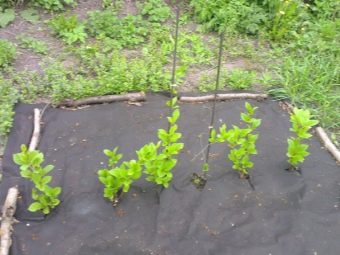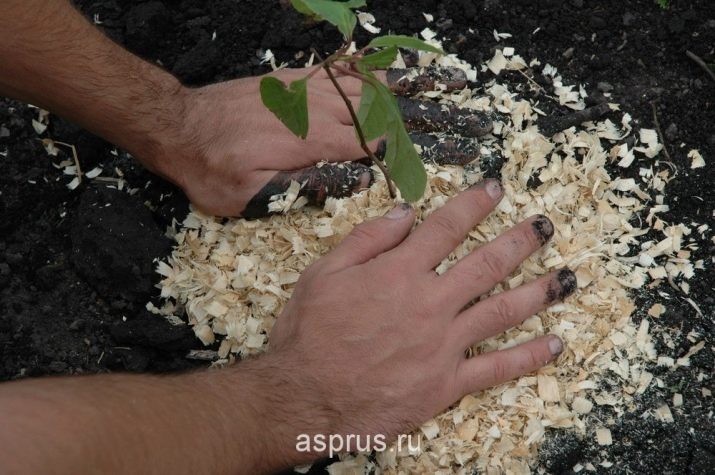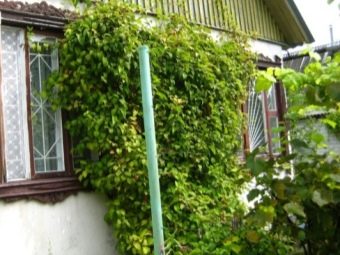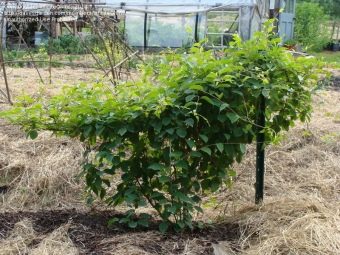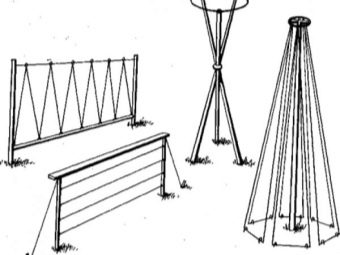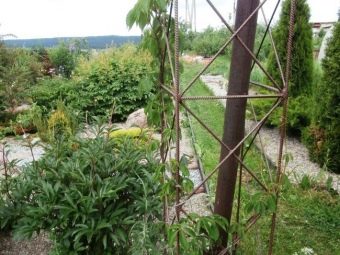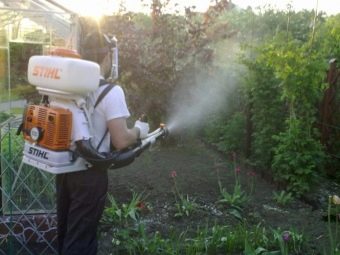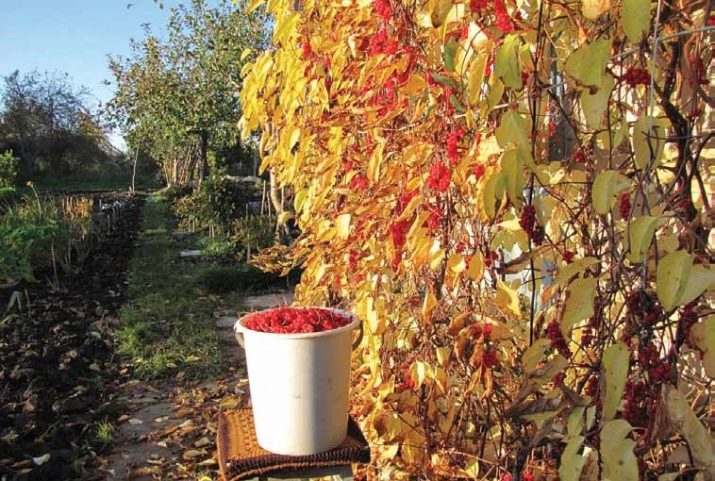Rules planting Chinese lemongrass and care for him in the suburbs
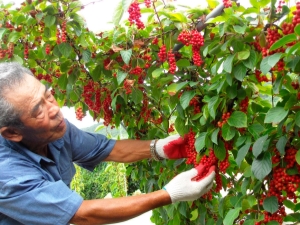
One of those Far Eastern plants that are of particular interest to gardeners is the Chinese magnolia vine, a woody liana with a number of obvious advantages. In addition to the spectacular appearance and excellent taste of its fruits, this species is able to boast an impressive unpretentiousness, which greatly simplifies the care of it in the Moscow region and other regions of central Russia. Do not differ in complexity and the rules of planting this plant, which is able to confirm both experienced and novice gardeners.
Variety selection
To date, there are only two cultivated varieties of Chinese lemongrass - "Firstborn" and "Garden-1." The rest, "amateur" variations of the described species. attributed to varietal incorrectly, which is explained by the lack of official status. As for the previously mentioned species, their main features are listed below.
"Firstborn"
This self-pollinating variety, which appeared due to the efforts of breeders from Russia, has the following characteristics:
- small height (up to 2 m);
- the number of fruits on one brush is from 35 to 45;
- the shape of the berries is round, the color is saturated red;
- fruit taste - sour;
- leaf shape - oval, pointed at the end, with rarely spaced teeth;
- the beginning of ripening is the end of August.
Separately, it is worth mentioning that this variety is resistant to frost and undemanding to growing conditions. In particular, the "Firstborn" is ideal for the climate of the Moscow region and the types of soil characteristic of central Russia.
"Garden-1"
The appearance of this variety is the result of the work of Ukrainian breeders. Like the “Firstborn,” this species is self-pollinating, but it has one significant difference — a great height, often reaching 5 m. The list of other features of the "Garden 1" is as follows:
- the number of fruits on one brush is up to 25;
- the shape of the berries is spherical, the color is red;
- fruit taste - sour, with a distinct lemon note;
- leaf shape is ovoid;
- average annual yield - up to 2-3 kg.
Such advantages of Sadovoy-1 as resistance to most diseases and the ability to endure very severe winters deserve attention.
Breeders say that in the coming years, the official list of varieties of Schizandra Chinese may significantly expand. Currently, experts are developing new varieties of this plant - precocious and characterized by increased yield.
Landing time
Considering the climatic features of the middle zone, the landing of Chinese Schizandra in the open ground of the Moscow region should be carried out in the spring, not in the fall. As practice shows, the optimal time for solving this problem is the period from the end of April to the beginning of May, when the return of frosts no longer threatens, and the ground warms to 10 ° C. Some experts allow the possibility of a later planting of lemongrass in Moscow and the region - until the beginning of June. This option is acceptable, but it is still not recommended to tighten it in order to give the young plant more time to accumulate strength for the winter.
Before the onset of planting dates for Chinese Schizandra, the grower needs to take into account several more conditions, which make it possible to count on successful cultivation of the vine.
- The plot should not suffer from a shortage of direct sunlight. It is desirable that the plant is in the light at least 6 hours a day.
- The optimal soil reaction is neutral (pH = 7). In addition, the soil on the site should be loose, fertile and not experiencing a regular excess of moisture.
- Plant lemongrass preferably on a flat area, well protected from cold winds.
It is also worth preparing in advance a support - a structure, without which the full development of the vine is not possible.Many gardeners prefer to plant lemongrass along a fence or walls, thereby protecting it from dangerous drafts, or around the gazebo, trying to decorate the local area.
How to plant?
On the eve of planting Chinese Schizandra, it is necessary to prepare the soil intended for it, carefully digging it up and mixing it with sand. After the ground should be leveled and make hollows in it, the presence of which will simplify further work. Also, a gardener should read the following rules for planting lemongrass.
- The pit intended for the young plant must be dug out 2 weeks before the planned landing. Its depth should be 40 cm, and its width should be around 60 cm. Such values are quite sufficient, and therefore it is not advisable to exceed them.
- Arrangement of the drainage layer at the bottom of the pit is mandatory. To solve this problem, suitable materials such as crushed stone or broken brick, placed an even 10-centimeter layer.
- On top of the drainage should be poured a mixture of equal parts of sod land, humus and compost. To improve the properties of the described combination, it is worth adding 2 more ingredients - 500 g of wood ash and 200 g of superphosphate.
As a rule, the two weeks mentioned above are quite enough for the soil in the pit to settle and become well-compacted.
No less important is the choice of seedlings. Experience shows that the fastest you can get a crop when planting a "ready" young plant, bought in a specialty store. The most justified to acquire seedlings, whose age is 2 or 3 years. Despite their youth, such plants have a very developed root system, which allows them to rely on their successful adaptation.
An alternative solution is the independent cultivation of vines - from seeds, cuttings or root suckers - provided that the gardener is ready for additional time and effort.
Given the painful reaction of Chinese magnolia vine to transplant, it is strongly not recommended to change the place of its permanent habitat.
If the owner of the site plants several young plants, he should maintain a meter distance between them so that the growing vines do not interfere with each other. Other conditions that are mandatory are:
- the location of the root of the neck planted lemongrass at ground level;
- thorough soil compaction around the young plant;
- creation of an earth mound along the edge of the wheel circle, preventing water from spreading during the irrigation process (optimal height is 10 cm);
- abundant soil moistening;
- covering the surface of the trunk circle with a layer of humus and peat.
Separately, you should consider the situation when lemongrass is planted in the immediate vicinity of the house. To avoid water from the roof on the soil and its waterlogging, it is desirable to locate the plant at a meter distance from the wall (or more, if possible).
How to care?
During the first two years since planting, the young Chinese lemongrass needs more thorough care than later. First of all, it concerns the strengthening of the plant's root system: in order not to damage it, experts advise more carefully to loosen the soil. In addition, during this period, it is desirable to protect the vine from excessive exposure to direct sunlight.
Fertilization
Based on the practice of experienced gardeners, it can be argued that the first feeding should be carried out in the third year of the life of a young vine. The solution to this problem involves the fertilization of soil with a solution of nitrate, 50 g of which is evenly distributed throughout the whole tree circle, and the subsequent mulching. This should be done monthly throughout the season.
In the fifth year, it is reasonable to add organic fertilizers to the “diet” of Chinese Schizandra — chicken droppings and cow dung diluted with water in a ratio of 20: 1 and 10: 1, respectively.Such feeding is desirable to carry out 1 time in 15-20 days during each summer season. With regard to fertilization in the fall, it is carried out with the onset of leaf fall and involves the use of 100 g of wood ash and 20 g of superphosphate, carefully mixed with the top layer of soil.
Watering
In order for lemongrass to please its owners with good crops, it should not suffer from a lack of moisture. This rule is especially relevant during the growing season, when the adult liana requires at least 60-70 liters of water for one irrigation procedure. In conclusion, the soil must be carefully mulched in order to avoid accelerated loss of moisture.
If the summer turned out to be too hot and not abundant in atmospheric precipitation, the Chinese Schizandra must be provided with additional moistening by regular spraying with water. You should also timely get rid of weeds growing in the immediate vicinity of the vines, which take away her moisture and nutrients.
Pruning
Starting from the second year after planting lemongrass, the grower needs to pay special attention to the shoots of the plant. For the full development of such vines no more than six are required, provided that they are completely healthy. This means that it is necessary to get rid of the rest of the shoots — first of all, the sick and the dead — by cutting them off completely.
In the future, pruning of Chinese lemongrass is carried out every 2 years. It is most rational to do this in late autumn, when the movement of juices stops and the plant is left without foliage. We should also mention the further use of cut shoots: as an option, it can become a material for growing new seedlings.
Support
One of the key conditions, the observance of which allows growing fruiting Chinese Schizandra, is the installation of a support for the seedling. To solve this problem, many gardeners are advised to use a metal grill - strong, durable and transmitting a sufficient amount of light. To install it, you need strong pillars with a length of 3 m and pits with a depth of 50-60 cm for their location.
If the site owner fails to build a full support immediately, he can do it the next year (but not later). For the first time, it is permissible to use pegs that rise about 1.5 meters above the ground.
Disease control
Despite its simplicity, in some cases, Chinese Schizandra may suffer from diseases such as fruit rot or mold, powdery mildew and leaf spot. Most often, these ailments are caused by violations of irrigation rules that lead to the development of pathogenic microflora, and combating them involves the following steps:
- collection and destruction of infected fruit;
- treatment of shoots with a 0.5% solution of sodium carbonate from powdery mildew (primary and repeated);
- spraying vines with 1% Bordeaux spotting liquid, carried out twice or three times with a weekly interval.
To protect young Chinese lemongrass from frost, it is necessary to fall asleep with a layer of fallen leaves with a thickness of at least 10 cm and cover with branches of coniferous trees. As soon as the vine becomes adult, these measures can be abandoned without the slightest fear.
When does lemongrass ripen?
Full fruiting of the described plant begins in the fifth year from the moment of its planting. The berries of Chinese Schizandra become ripe by the end of August, but they should be harvested later - starting in September, when they reach full maturity, right up to the first cold weather. Characteristic signs, the presence of which allows you to pick fruits for further use, are bitter-sour taste and a high content of juice in the pulp.
For cutting brushes it is desirable to use a well-sharpened knife.who need to work very carefully, so as not to damage the vine. It is necessary to put fruits in the baskets or boxes made of wood or other materials not subject to oxidation.This means that metal containers will have to be abandoned in order to avoid the formation of unhealthy compounds. It is also worth considering that the picked berries of lemongrass have a small shelf life - about 2-3 days, during which they need to be processed.
Summing up, it remains to state that the cultivation of Chinese lemongrass in the Moscow region is not only feasible, but also a very interesting task. Following the above recommendations, any gardener can gain useful experience and collect rich crops, spending a minimum of time, effort and money.
About all the secrets of growing Chinese lemongrass, you will learn further.

